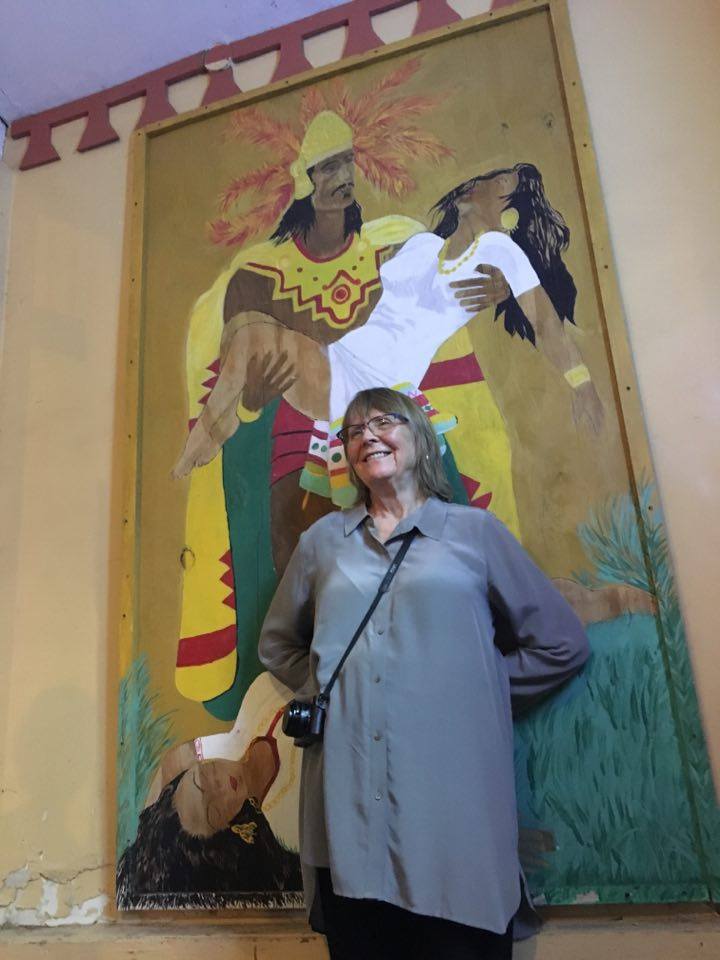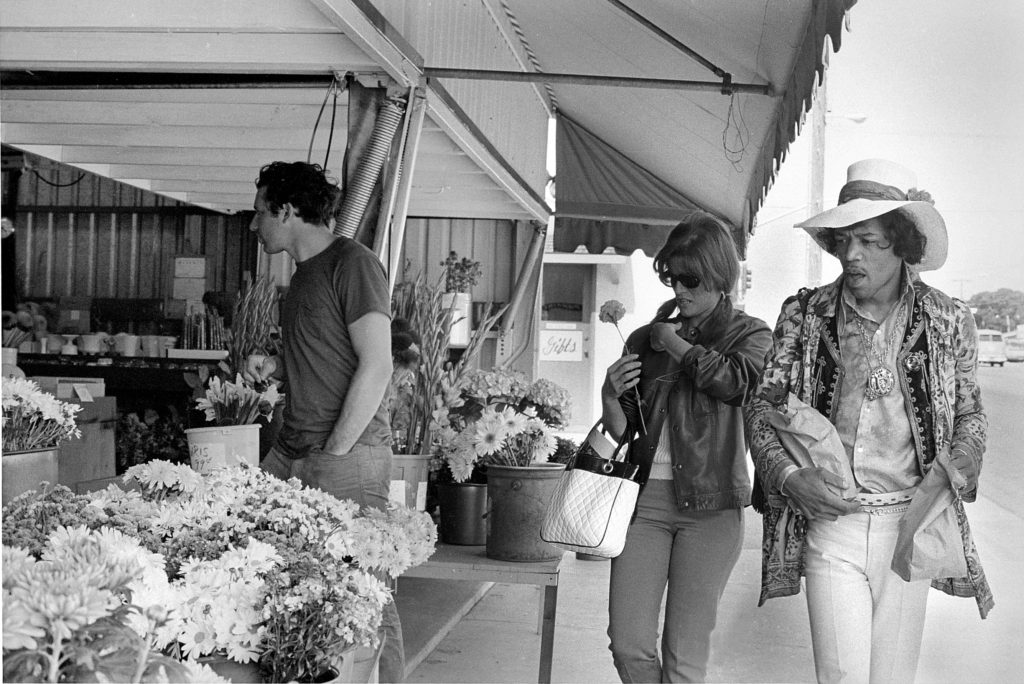UD: What brought you to the Catskills?
EM: I had a friend called Helen Levitt, who was a wonderful, well-known photographer. I went on summer vacation with her almost every year beginning in 1980. We went to other places, like Cape Cod or New Hampshire and other spots and then in 1994, she came to Catskills. I didn’t come that year or the year after because I was working on a project in Hawai’i. In 1996, I started coming to stay with her in the summer time. That’s how I got introduced to the Catskills.
In 2005, I bought a house across the road from where we were staying every summer. It was a house I had been watching every year and nobody was in it and I used to wonder about it. Anyway, so I started looking for real estate and I looked for two years. The second year, this house was for sale and, almost as a lark, I made a low offer and got the house.
What year was that?
2006.
That was the year before I bought in 2007.
It wasn’t supposed to be a residence. I didn’t know what I was going to do with it. I thought it was going to be mostly a rental, but I was living in Oregon and, in 2008, I lost most all of my income forever.
How?
I owned stock that went away in the downturn in the country.
Me, too. I lost half of mine.
I lost all of it.
I wonder how many people that has happened to.
I think a lot of people but I think you’re not supposed to talk about it. It’s very un-American to ever be poor, you know.
True!
So, you’re not allowed to talk about it because people don’t know what to say. So I couldn’t sell my house in Oregon and I didn’t want to sell this house [in the Catskills] either because the real estate market tanked as a result of the rest of the tanking. All the properties went down in value. I also had an apartment in New York City, which I didn’t want to sell, because I would’ve ended up living there, but it was the only one that would sell. It took another 7 years for me to get out from under those properties. So what I was doing during those seven years was moving around everywhere and renting out my properties. So I would camp in other people’s houses and house sit. We just moved all the time. It was interesting, but a zapper in terms of getting work done, so I’m very far behind in my work. But I live here now.
Are you a New Yorker?
I’m from California originally, but I didn’t really grow up there. Part of the time I was in California.
Where did you go to college?
I went to Stanford University.
What did you study?
First music and second art.
Have you been a musician?
No, I gave it up when I quit it as my major.
What brought you to New York?
I was teaching photography and film in Massachusetts, and my husband wanted a divorce and I didn’t want to live there anymore, so I quit my job and moved to New York City in 1978. I lived there for 25 years.
I bet you’ve got some New York stories.
Maybe…
Were you a superstar photographer in New York City?
My first two years I taught at Bard College, film and photography. Then I got a job at NYU teaching photography and then I retired in 2001. I had enough money to retire until I lost the money.
Where are your exhibitions?
The one in the Longyear Gallery is down, so now I’m in the group show because I’m a member of the gallery. I’m having a big exhibition next year – and I’m preparing for it now – in Savannah Georgia.
Good for you. What made you leave New York City?
Well, I always wanted to live in Oregon by the ocean. I had lived there part of the time as a child. So I purchased a house there and moved there. Then it turned out that it wasn’t a really good place to be living. Then I couldn’t afford to live there any more and eventually, everything got sold and now I live here – and it’s good. It’s good, but I’m doing a lot of catching up.
What’s your process – and daily life like – here as you’re catching up?
Well, there’s an ideal day and there’s a less ideal day. The ideal day is that I get up at seven and go down to the pool for a swim and then I start my workday around 9.30. Then I work in my studio and there are always things to do in the house and the garden. I go into the city sometimes to do business.
What do you do in the studio?
I have a huge archive of photographs. I have 57 years’ worth of photographs. I’m working on a video that I’ve been editing that also has to do with living here. It’s about my summers with my friend that I mentioned earlier. It’s almost finished. Today I got up a 7am and I drank my tea and sat on the deck because it was warm enough. Then I went to do email and that takes about an hour. Then I had some breakfast out on the deck. Then I came to my studio and I had various people to communicate with. There’s a grant that I’m applying for and I had to write about that: various business-y things. The main goal is to get my archive organized.
How far are you into that?
I haven’t even started. I had to put away a lot of stuff that I pulled out for a curator who visited about a month ago. I have thousands and thousands of images.
I can imagine. What are your subjects?
Everything. But mostly after the first ten years; I never worked in the studio. It’s all whatever I see and wherever I go.
Give us a snapshot, if you’ll pardon the pun, into some of the subjects over the years. What did you do in the beginning?
In the beginning, I did photojournalism for a living.
Who did you work for?
I worked for a magazine called The Medical World News. I worked sometimes for Sports Illustrated. I worked for other publications, graphic designers who made brochures. I did some ads. In [the sixties], a photographer was a generalist because there weren’t so many.
So you must have had a really varied life there. Who are some of the most interesting people you’ve ever met.
That’s a good question. In 1967, early in the year I lived in Mill Valley, California, in a little cottage on the mountain. One night I fell asleep watching TV, but there was a knock on the panes of glass in my windows. I looked out and there was a face out there and a voice said: “Where’s Suki? I’m looking for Suki!” I told him to go down the stairs – 93 stairs – to the bottom. The next morning I discovered this person was Hugh Masekela, a south African musician, who played with a band called The Byrds.
There was the first big rock and roll concert on my mountain and you weren’t allowed to drive there. You were supposed to go to town and get on a bus and go up, but he had a motorcycle and he took me up there with Suki. I met a guy there -right when I was photographing The Doors, whom nobody had ever heard of – and he said: “Do you have pictures of the Haight-Ashbury?” I told him I did. He was making up a book. So I went over to visit him, three days later.
I found out about the Monterey Pop Festival that was happening a week later and I got an assignment from a magazine to go and photograph it. That set me up for a life of photographing rock and roll music. I had already been photographing Jazz musicians, so this was a new thing and I did it for two years. I went on tour with the Steve Miller Band all over the country and I did their first album cover.
How do you like it in the Catskills?
I didn’t plan on coming here. It just worked out that it was where I could live. I like here but it’s an odd thing to do. I’m kind of too old to re-establish everything.
You’re never too old to establish.
I think you are. I think you can be. I’m going to be eighty in October.
You’re only as old as you feel.
No, the body starts telling you that you’re older.
You can just ignore it, can’t you?
To a certain extent, I’ve always ignored it.
Tell it to shut up! [Laughs]
Yeah. I’m trying to be content with having fewer close friends around and just doing my work and going to art events here and there. I have a good friend who lives an hour and a half away from here so that’s not too bad. I don’t mind the winters here one bit. I was disappointed that we didn’t have any snow last winter, because I like to shovel snow.
You can’t be getting that old if you like to shovel snow.
What’s happening where I live, on this hill, is that the older generation is leaving; all the houses are for sale. All the people I knew are going away and it’s all been taken over by younger people. I’m not complaining about that, but I don’t know them.
What inspires you most about the Catskills?
I think it’s very beautiful and I love the mountains. Having grown up primarily in the west – it’s a different experience because here it’s intimate in feeling and in the west it’s vast and grand. There’s an intimacy to these mountains; it’s like you can touch them whereas in the west the landscape is vast, the trees are gigantic and it’s grand. This is different; it’s not grand.
Do you do much landscape photography?
I do it all the time. I’ve taken so many landscape pictures in my life, but I hardly ever print them, just because I know how to do it very well and I like to do things that I don’t know how to do yet. I’m more interested in what I don’t know how to do than what I do know how to do. But I might end up with a series of things I see from my deck…


Hello Jenny’
Thanks for doing this writing about me and my life. Many people have commented, and their reading about me was quite a surprise. It seems that your blog is popular and read by a number of people! In any case, I appreciate what you have written and wish you well with all that you do.
Elaine Mayes
I’m not sure what to write here….except, Thanks again!